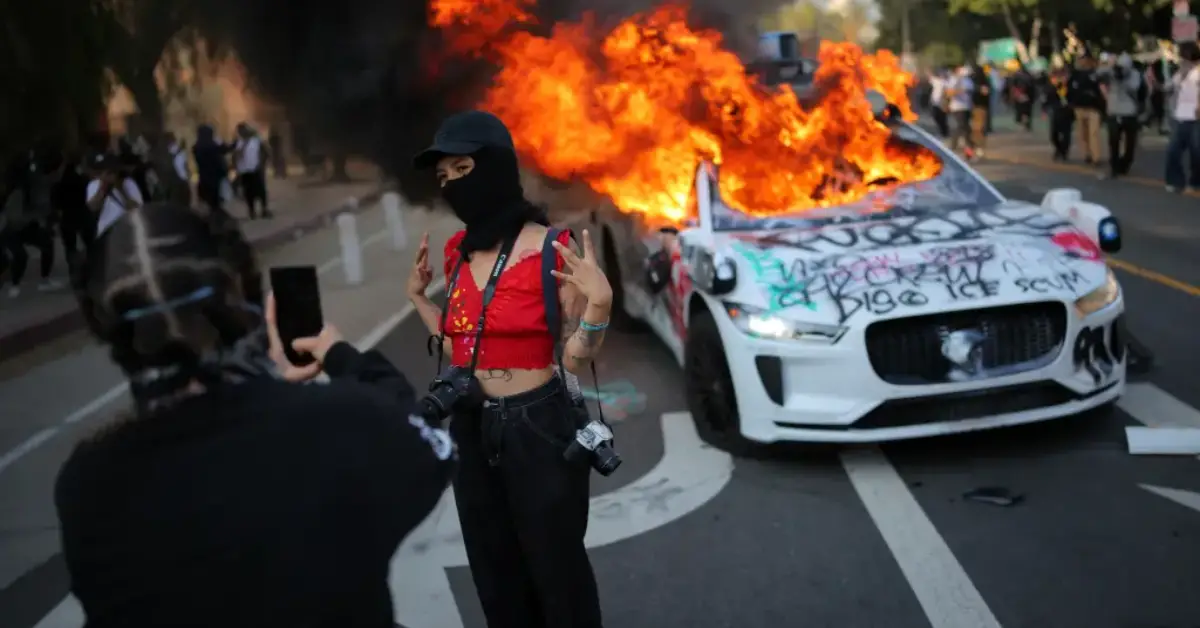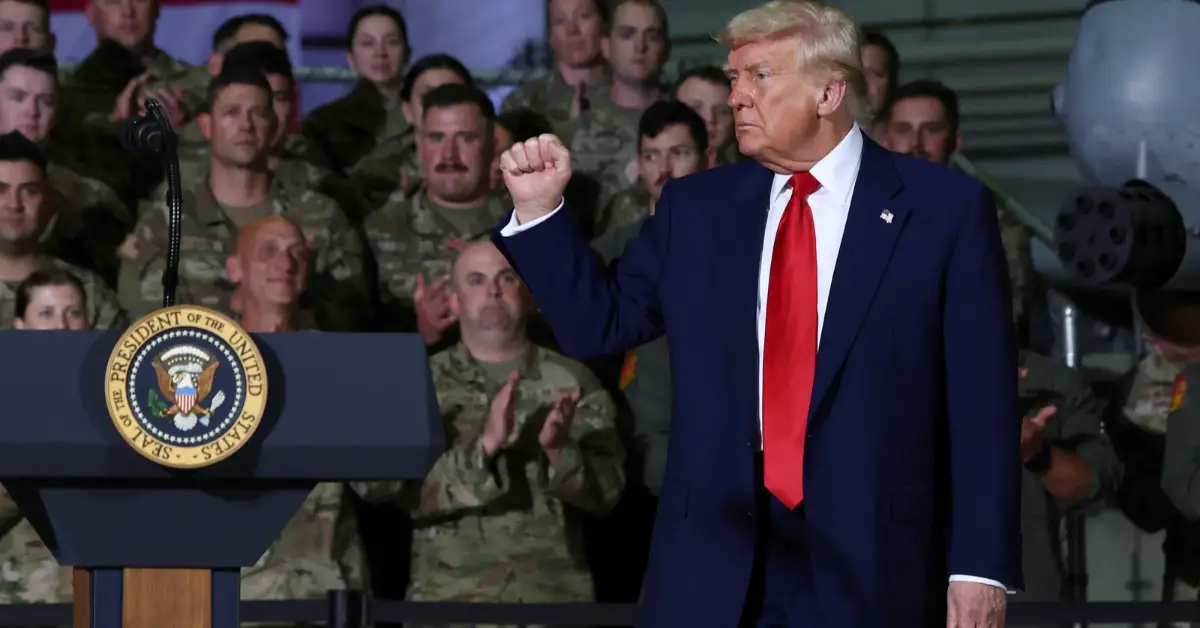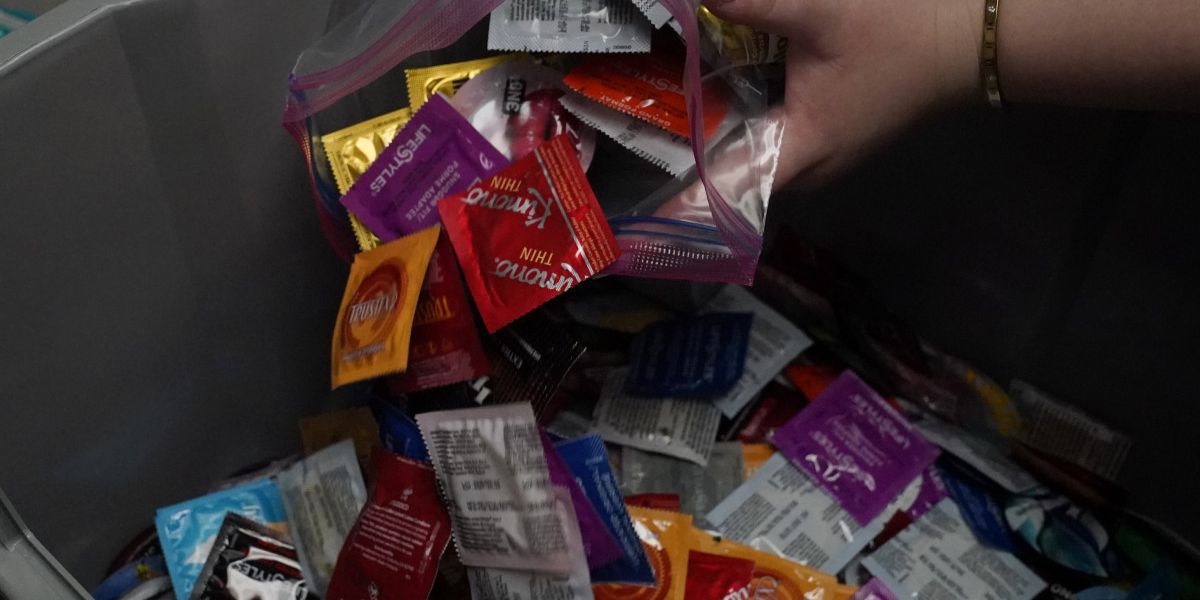On a chaotic evening in downtown Los Angeles, violence erupted when approximately 2,000 protesters took to the 101 Freeway, blocking traffic and demanding action against U.S. Immigration and Customs Enforcement (ICE). The demonstration quickly escalated into a violent confrontation, with self-driving cars being set on fire as police clashed with rioters. The shocking scene left the city on edge and raised serious concerns about the safety of autonomous vehicles on public roads.
The protests were organized in response to what activists claim are unjust deportations and inhumane treatment of undocumented immigrants. These actions have sparked a heated debate about immigration policies, with tensions running high across the country. As the night unfolded, the group grew increasingly agitated, blocking both lanes of the freeway, preventing commuters from passing through, and causing traffic chaos.
The protest quickly turned into a riot, with demonstrators throwing rocks and bottles at law enforcement officers, while others vandalized vehicles. The most alarming incident occurred when a number of self-driving cars, which were part of a tech company’s pilot program, were targeted and set on fire by the protesters. These vehicles, designed to drive autonomously without human intervention, were seen as a symbol of modernity and technological advancement, making them a primary target for the rioters.
Police officers responded with force, using rubber bullets and tear gas to disperse the crowd. Despite the law enforcement’s efforts, the situation remained tense for several hours, as protesters refused to back down. Local news reports confirmed that multiple people were injured in the chaos, including both police officers and demonstrators. The exact number of injuries has not been confirmed, but sources say the situation was highly volatile, with many fearing for their safety.
The protests came on the heels of several high-profile ICE raids across the country, which have drawn widespread condemnation from activists and civil rights groups. These groups argue that the raids are part of a broader crackdown on immigrant communities, which has led to a growing sense of fear and uncertainty among undocumented people. The LA freeway riot is seen as the latest in a series of aggressive demonstrations against the Trump administration’s immigration policies.
Self-driving cars have become an increasingly common sight in major cities, as companies like Waymo and Tesla continue to test and refine their autonomous technology. However, the incident on the 101 Freeway raises serious questions about the safety of these vehicles in volatile environments. Some experts are concerned that these cars could become easy targets for violent protests or other forms of civil unrest, especially when parked on public roads.

In the wake of the riot, local officials are calling for increased safety measures for self-driving cars, including better protection from vandalism and more stringent protocols for deploying them in high-risk areas. “We have to ensure that the public is safe, and that includes the protection of autonomous vehicles,” said one city official. “It’s a new era in transportation, but we need to understand the risks and take appropriate steps to mitigate them.”
As investigations into the riot continue, the protestors’ motivations remain clear: they want a complete overhaul of the U.S. immigration system and the end of ICE’s operations. However, many argue that the destruction of property and the targeting of self-driving cars may have hurt their cause rather than helped it. Experts say that while protests are a necessary part of democracy, violent actions can often alienate potential allies and overshadow the message being conveyed.
The city of Los Angeles is grappling with the aftermath of this unprecedented event, as law enforcement works to identify the individuals responsible for setting the cars on fire and other acts of vandalism. The protest has sparked discussions about the future of protests in urban areas, particularly as autonomous technology continues to expand.
Despite the damages, there is a sense that this incident will not be the last of its kind. With protests over immigration policies growing across the country, cities may need to reassess their strategies for dealing with large-scale demonstrations, especially when they turn violent.
As the legal process moves forward, it remains to be seen what kind of consequences the demonstrators will face, and how their actions will impact the ongoing debate over immigration. What is clear, however, is that this incident has further fueled the nation’s deep divide over the issue of immigration, leaving many to wonder where the protests will lead next.




